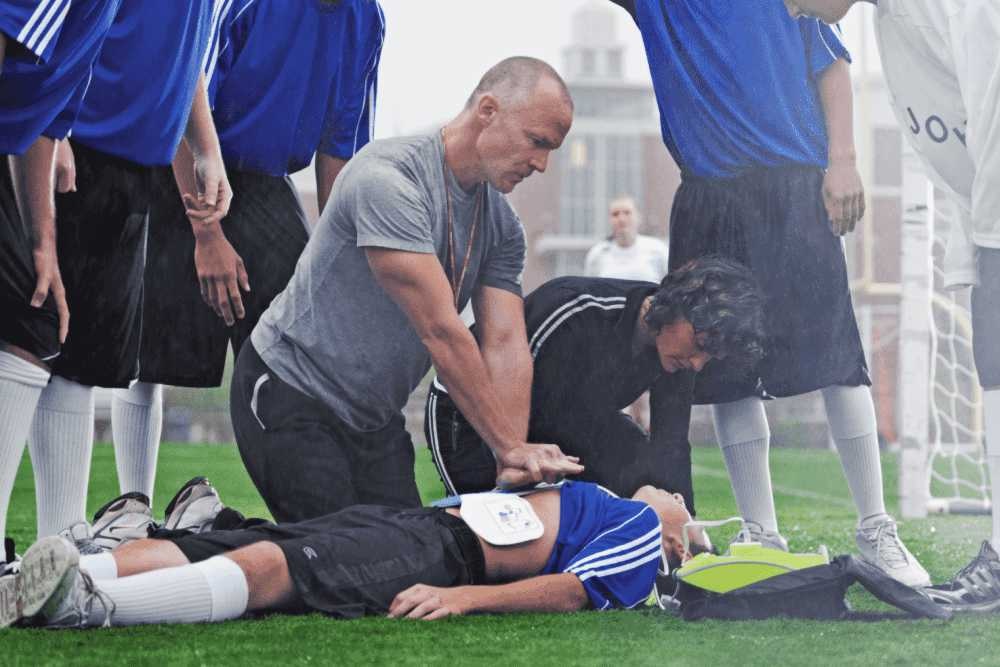Short version written in 1999 (long version in 1988). Still more true and valid than ever.
Cruising along the banks of the river in the late 1700’s Queen Catherine of Russia viewed what appeared to be a picturesque setting of well-built tidy houses and shops with villagers happily engaged in commerce and other pursuits. Catherine, however, was oblivious to the poverty and misery existing just beyond her sight. Unknown to the Queen the setting was all a sham. Known as a Potemkin Village, these false buildings were a moveable, fake village, set up along Catherine’s carriage or River route to give her a satisfying but false experience of her dominions. Just as Queen Catherine of Russia was “taken for a ride” two centuries ago, the United States and the rest of the free world has been given a similar cleverly devised deception by Russia today.
The construction of the aged Potemkin Village’s modern counterpart began in earnest in 1986 under the General Secretary of the Communist Party, Mikhail Gorbachev. The Soviet Union instituted dramatic and wide-ranging reforms. Soviet society was opened up to “criticism” and debate through a policy known as “Glasnost” and a process known as “perestroika” was started to revitalize and restructure the Soviet economy. As part of the economic reforms a more moderate stance was taken in domestic and foreign policy. A charismatic leader, Gorbachev was widely hailed as representing a “new breed” of leader and became widely popular in Europe and the United States. No one doubts that fundamental changes appear to have taken place.
But a far different world waits–beyond the facade. In instituting these reforms Gorbachev, the Politburo and their “dictatorship of the Proletariat” did not depart from basic tenets of Marxist-Leninist ideology and abandon their long range goal of world-wide domination. What many fail to realize is that the policies of Glasnost-Perestroika are rooted in and derive sustenance from Marxist-Leninist ideology.
Four things are necessary to understand the facade taking place:
- A basic understanding of Marxist-Leninist ideology.
- An understanding of the real nature of Glasnost.
- the dialectical nature of advance.
- The communist idea of morality.
Regarding the first, The basic doctrine of Marxism-Leninism is that a state of war exists and that the Communist Party was created to win this war. Lenin modified Marxist theory of Class Warfare to include the Communist Party as the spearhead or “vanguard” of the proletariat which would perform the task of consummating the universal class war into world communist victory. As the vanguard, the Communist Party which was composed of both overt and covert members, would wage the war against the capitalist society.
Once they had obtained power, the Communist Party would establish a transitional political rule known as the “dictatorship of the proletariat”. Under the Soviet Union this dictatorship of the proletariat was the Communist Party of the Soviet Union. How the dictatorship would function and operate would be determined by whatever is needed to build socialism. Its ultimate goal would be to strengthen the socialist state to the point where Communism could then be established. The Communist Party therefore is essential to the doctrine of Marxism-Leninism.
Regarding the second essential understanding, that of the real nature of Glasnost, A Strong economic base is essential. To strengthen the state would require:
“vigorous development of the economy in order to provide the electrical power, materials, resources, the science and technology and the military power necessary for the victory of the communist system”1
Under every Soviet leader since Lenin, A form of Glasnost known as “Democratic Centralism“2 operated within the Communist Party as a self-correcting and feedback system to strengthen the Soviet social and economic system. One function of “democratic centralism” or “Glasnost” was to strengthen the Military through a strengthened economy so that “revolution” can be carried on and eventual worldwide domination assured. This principle first had its origin in Imperial Russia under Tsar Nicolas 1’s reign (1825-1855). It was put in force in Tsarist Russia to provide constructive criticism for much needed social and economic reforms. It served as:
“an effective tool for correcting failures of bureaucratic institutions and thwarting corrupt practices among officials.”3
Known as “Glasnost” under Tsar Nicolas 1, Lenin reintroduced the concept into the Communist state as a:
“leadership initiated and leadership regulated criticism designed, to reverse undesirable socio-economic trends.”4
Lenin, in fact stated:
“…everything that takes place at a socialist enterprise should be made public [In Russian: Predavit Glasnost]. The shortcomings in the economic activity of each and every commune should be disclosed to the public. We need public criticism which will expose the evils of our economy, strike a responsive chord with the public and help us cure social problems.”5
Another function of Glasnost was to stimulate public participation in political life, in order to strengthen the regime’s legitimacy. Lenin further said:
“the state is strong when the masses know everything, render their opinions on every issue, and consciously respond to every policy.”6
In other words, the Soviet people are more apt to believe and support the Government in its goals and designs if public participation were allowed. However, under Lenin, there were limits to how far criticism and debate could go. There was no free flow of information as we know it. Whatever was said had to promote the best interests of socialism and there were strict parameters within which divergent opinions could be voiced. So, under Lenin, certain publications were banned, and criticism of the regime was outlawed. To Lenin, these tyrannical measures were necessary to ensure the overall success of such public criticism.
The principle of democratic-centralism (Glasnost) was continued under Stalin. Stalin said in 1928:
“In order to move forward and improve relations between the people and the leaders we should keep the valve of self-criticism open. We should give the Soviet people an opportunity to criticize their leaders for their mistakes so that the leaders do not put on airs and the masses do not distance themselves from their leaders.”7
The Soviet Constitution under Stalin stated that although free speech, free press, freedom of assembly, etc. were provided to the people, these “freedoms” are “guaranteed” only if:
“in accordance with the interests of the people and in order to strengthen and develop the socialist system.”8
Furthermore, the Constitution stated that what is in the interests of the people and what develops and strengthens the socialist system is decided by the Communist Party and its leadership, the Politburo.
The principle of democratic-centralism has been an integral part of Marxist-Leninist ideology and has been carried on by all of Lenin’s successors in one form or another. When Soviet Premier Mikhail Gorbachev introduced his policies of Glasnost they certainly were not anything new or fundamentally different. Gorbachev stated that the purpose of the reforms are to make sure that a transition from “an overly centralized command system of management” occurs to one based on a “combination of centralism and self-management” and further that “the party will tolerate no changes from the adopted principles of the economic reform.”9 In other words the reforms were meant to assess the problems of the Soviet social and economic systems in order to deal with the necessary changes. However, the “freedom of discussion” allowed under Glasnost remains clearly controlled by the Party and Boris Yeltsin continues with this practice.
The third essential to understand is the Communist idea of “morality.” Whatever advances the revolution is moral. Lenin taught that the Communists should be ready to resort to “any trick, ruse or illegal method.”10
Afanasayev, a Communist theoretician, taught that:
“from the point of view of communist morality, that which promotes the movement of society toward communism is moral.”11
In other words, the end justifies the means. Any means or methods therefore to advance the revolutionary cause, whether it involved lies, deception, murder, etc. would be justified by the end result-Communism. A fundamental part of Marxist-Leninist ideology is trickery and deceit.
Regarding the fourth essential, Lenin and his followers have justified sudden shifts in policy by the concept of the “dialectical nature of advance” The Communist slogan is: “nature acts dialectically.”12 Dr. Fred Schwarz, a leading anti-Communist portrayed this concept as follows:
“Wishing to advance in a room full of people, I do not walk through the aisle and straight toward my goal. Nor do I move slowly through the crowd shaking hands with friends and acquaintances, discussing points of interest, gradually nearing the objective. The dialectical pathway is different. It consists of a resolute forward advance followed by an abrupt turn and retreat. Having retreated a distance there is another turn and advance. Through a series of forward-backward steps the goal is approached. To advance thus is to advance dialectically. The Communist goal is fixed and changeless, but their direction of advance reverses itself from time to time. They approach their goal by going directly away from it a considerable portion of the time. Lenin wrote the textbook, One Step Forward, Two Steps Back. Chinese Communist schoolchildren are taught to do the dialectical march taking three steps forward and two steps back. If we judge where the Communists are going by the direction in which they are moving we will obviously be deceived.”13
Soviet leaders from Lenin to Yeltsin were masters of dialectical theory. While the Main Goal and strategy of the Communists remain the same (overall world domination) their tactics shift and vary from time to time.
In his widely published but too often ignored book, “Perestroika,” Gorbachev unveiled what was really going on with his “reforms.” He insisted, he wrote that:
“Lenin never believed that the road to socialism, would be straight, he knew how to change slogans when life required it.”14
Former ambassador and special advisor to President Reagan, Paul H. Nitze, has written concerning the various tactical shifts the communists have undergone that:
“The Communists have a flexible view with respect to strategy. They think that strategy should, from time to time, be altered to reflect changes in the ‘correlation of forces’. In the correlation of forces they include not only military forces, but economic, political and psychological factors as well. When the correlation of forces is favorable to their ends, their doctrine calls on them to exploit the favorable correlation by moving forward. When the correlation is negative, the doctrine calls upon them to hold or to retreat while they attempt to reverse the adverse trends. With respect to tactics, the Communists believe there should be great flexibility. The guiding thoughts should be deception and surprise.”15
Such is the scam, the Potemkin Village, of Glasnost-Perestroika, and all that has followed on its heels. Many Soviet Defectors have attempted to warn us, both prior to the “collapse” of the Soviet Empire and afterwards. Anitoliy Golitsyn, a former propaganda minister turned defector, who was intimately involved in the planning of Glasnost and Perestroika,16 and Colonel Stanislav Lunev,17 the highest ranking military intelligence officer ever to defect to the United States, both have issued warnings that all is not as it seems in Russia and that the Russian Military is doing everything they can to prepare for a war that they consider inevitable. Those with “eyes to see” would do well to wake up to the warnings, make haste to take down the facade in the eyes of America’s leaders and her citizens, lest our foolish foreign aid, our foolish disarmament, and our overzealous cooperation with Russia become the instruments of our own undoing.
End Notes
- “Great Soviet Encyclopedia” 27 vols. Moscow: Sovetakaia Entsiklopedia Publishing House, 1970. vol 3. p. 156.
- Bouscaren, Anthony. Is the Cold War Over? Falls Church, Va.: the Capitol Hill Press, 1953. p. 8,9.
- Ibid.
- Great Soviet Encyclopedia. op cit, vol. 17. p. 201.
- Gross, Problems of Communism. 1988. p. 69.Ibid. p. 70.
- Ibid. p. 70.
- Ibid. p. 70.
- Schifter, Richard. “Address of Richard Schifter before the American Bar Association in San Francisco” August 10, 1987.
- Gorbachev, Mikhail. “Document: The Revolution and Perestroika.” Foreign Affairs. Winter (87-88), p. 420.
- Great Soviet Encyclopedia. Op Cit, under Communist Morality.
- Ibid.
- Schwartz, Fred. “You Can Trust The Communists: To Be Communists“, Long Beach, Ca. Chantico Publishing Co., 1969. p. 30.
- Ibid. p. 153.
- “Gorbachev, Mikhail.” “Perestroika: New Thinking for our Country and the World.” New York: Harper and Row, 1987. p. 8.”
- Sleeper, Raymond S. “Mesmerized by the Bear: The Soviet Strategy of deception. “New York: Dodd, Mead and Co. 1987. p.140.
- See for example his works entitled: “New Lies For Old: The Communist Strategy of Deception and Disinformation” or “The Perestroika Deception: The World’s Slide Towards The ‘Second October Revolution‘”.
- See his work entitled: “In The Eyes of The Enemy“.








2 Responses
Well -researched article, but I fear you must simplify the title to achieve a general appeal, such as @The Facade of Government.”
You make a good point and I’ve thought about simplifying the title, as well as throughout the article, but as a former teacher at a private school I want to educate as much as possible. We’ll see.